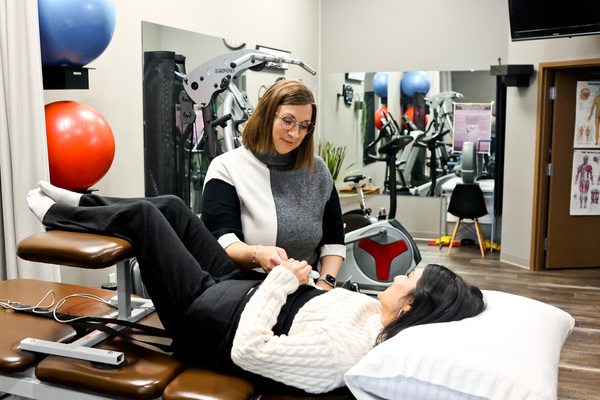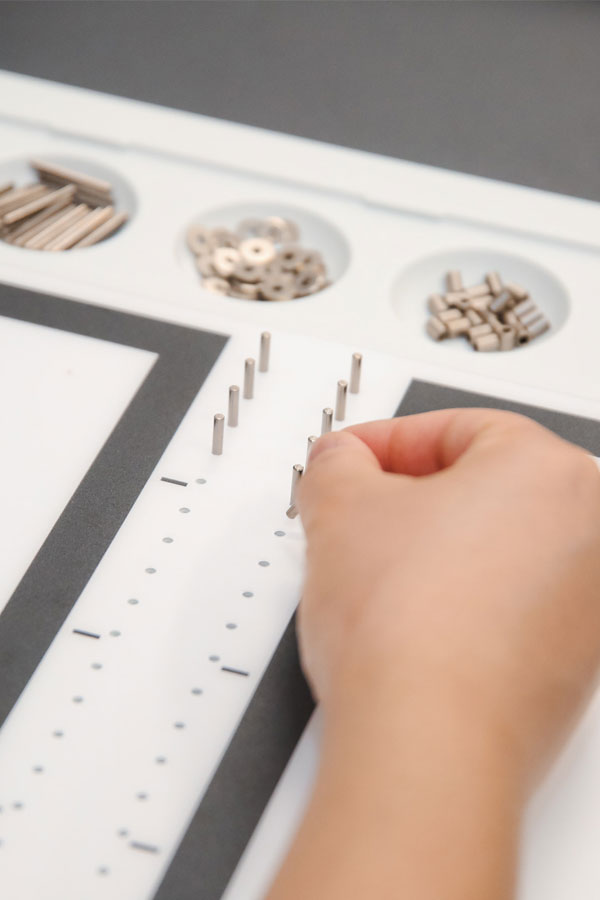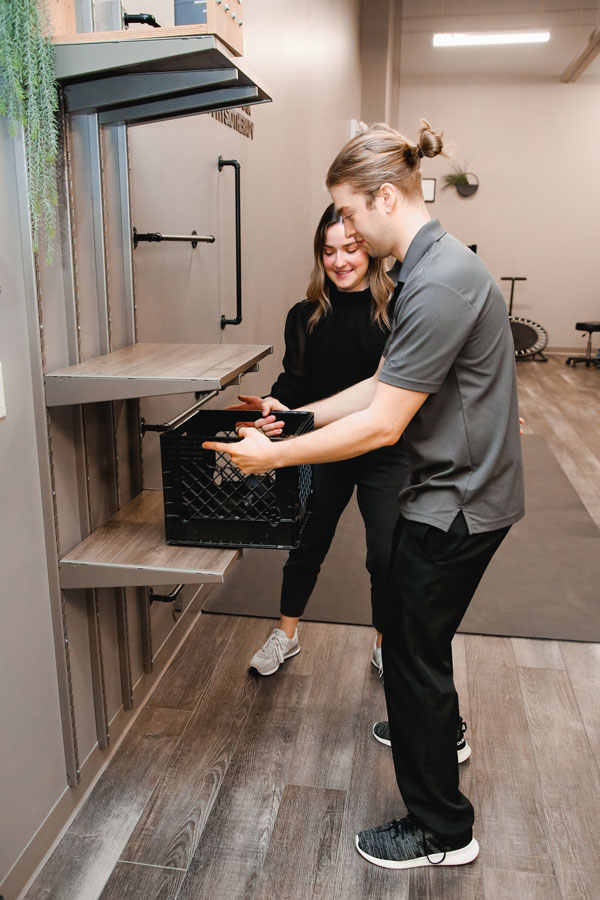Services
Our Services
We have physiotherapists, massage therapists and athletic therapists that work with you to achieve your goals both in clinic and virtually from the comfort of your home. Our therapists will begin by getting a history of your injury and then perform a thorough physical assessment to diagnose your condition and determine what you need. We offer a variety of treatment options for people of all ages and lifestyles and your therapist will work with you to create an individualized treatment plan. Our clinic also has a well-equipped gym space to facilitate comprehensive rehabilitation.




Physiotherapy
Joint Mobilizations
Neuroproprioceptive Taping
Virtual Physiotherapy visits
Interferential Current (IFC)
Group Exercise Classes
Custom Orthotics & Soft Orthotics
ImPACT (Immediate Post-Concussion Assessment and Cognitive Testing)
Neurodynamic Exercises
Core Stabilization Exercises
Acupuncture
Dry Needling
Functional Movement Screening (FMS)
Education on Injury and/or Disease
Mechanical Traction Bed
GLA:D Exercise Program for people with Osteoarthritis
Hip & Knee Classes for Total Joint Replacements
Modalities- Ultrasound, TENS, Muscle Stim
In Home Physiotherapy
Soft Tissue Massage
Stretching & Strengthening
Splinting
Stroke Rehabilitation
Muscle Stimulator
Athletic Taping
Orthotics




Neuro Rehabilitation
Rehabilitation in the comfort of your home or at the clinic.
Stroke and neurological conditions can result in reduced mobility and functional capabilities, decreased balance, changes in muscle strength, tone and more.
Active Hands on Therapy
Education and Home Exercise-Based Rehab
Proprioceptive Training
Balance Re-Training
Gait Re-Training
Muscle Strengthening
Our goal of treatment is to help the brain re-learn and adapt to your environment to promote functional recovery and help you meet your goals.
We provide active, hands-on, exercise-based rehabilitation to address mobility and functional impairments for adults with neurological conditions such as:
Stroke
Parkinson’s Disease and Other Movement Disorders
Multiple Sclerosis
Traumatic Brain Injuries
Balance Dysfunction




Pre & Post Operative Hip & Knee Replacement Programs:
Maximize your recovery and feel, move, and live better following hip or knee surgery at Kenaston Common Physiotherapy!
NOTE: Coverage by MB Health may be available to you if you had a replacement on or after Jan. 1, 2023.
Pre-Surgery Strengthening
Reduces recovery time
Improves strength and balance
Improves general fitness
Gets you comfortable with post-op rehab phase
Cost-Effective Post-Op Hip and Knee Classes for Total Joint Replacements
How it works:
Begin with an initial assessment by a physiotherapist
Evaluate baseline strength, establish goals and discuss treatment plan and expectations
Education
Pain and swelling management
Exercise and mobility aid progression in a safe and motivating environment
Two Options
Individualized treatment sessions with a physiotherapist
Group classes- supervised by an athletic therapist and physiotherapist
Outcomes:
Improved range of motion
Reduced pain and stiffness
Improved balance and strength
Return to work, home and daily activities


GLA:D™ Canada Comprehensive Management for Osteoarthritis
It is an individualized exercise program used to manage or improve symptoms and may even help to delay joint replacement surgery.
Those with a diagnosis of osteoarthritis, but who are not preparing for or recovering from surgery
Pre-program eligibility assessment
Initial assessment: A physiotherapist will begin by examining your strength, range of motion, and function to develop a treatment plan and decide if GLA:D™ Canada can help you achieve your goals.
12 neuromuscular exercise sessions that are tailored to the participant (over 6 weeks)
A second educational session with a physiotherapist during the course of exercise sessions
A post program evaluation with a physiotherapist
Manage osteoarthritis symptoms
Reduce pain intensity, and joint related pain killers
Increase physical activity levels


Massage Therapy
Therapeutic Massage
Deep tissue Massage
Pregnancy Massage
Pre & Post Sports Massage
Trigger point
Myofascial release
Lymphatic Massage
Swedish Relaxation Massage
Breast Massage
Cupping Therapy
TMJ Massage
Rib Mobilization



Athletic Therapy
Reconditioning
Work Hardening
Education on injury
Strength and Conditioning
Custom exercise programs
Soft tissue massage/release
Neuroproprioceptive taping
Athletic taping



Pelvic Floor Physiotherapy
Pelvic Floor physiotherapy is a specific area of physiotherapy that evaluates the function of the pelvic floor muscles which play an important role in bowel and bladder function as well as sexual health. It involves doing an external examination of the low back, pelvis, hips and abdomen as well as an internal examination of the structures of the pelvic floor.
Commonly Treated Conditions Include:
Perinatal and postpartum care
Bladder and bowel incontinence
Bladder pain conditions
Bladder frequency/urgency
Sexual dysfunction/pain
Constipation
Low back, hip, pelvic and tailbone pain
Pelvic organ prolapse

A Pelvic Floor Assessment includes:
A detailed history of current symptoms and past medical information and discussing goals for rehabilitation
Physical examination includes looking at posture, breathing, range of motion of the low back, pelvis and hips as well as an external examination of the skin and tissues of the pelvic region
With consent, an internal examination of the pelvic floor which can be done vaginally and/or rectally to assess strength of the pelvic floor muscles and to look for areas of increased tension or pain
Vestibular Rehabilitation
Common Conditions Treated by Vestibular Therapists:
Dizziness
Vestibular neuritis
Cervicogenic dizziness
Vertigo
Labyrinthitis
BPPV (Benign Positional Paroxysmal Vertigo)



